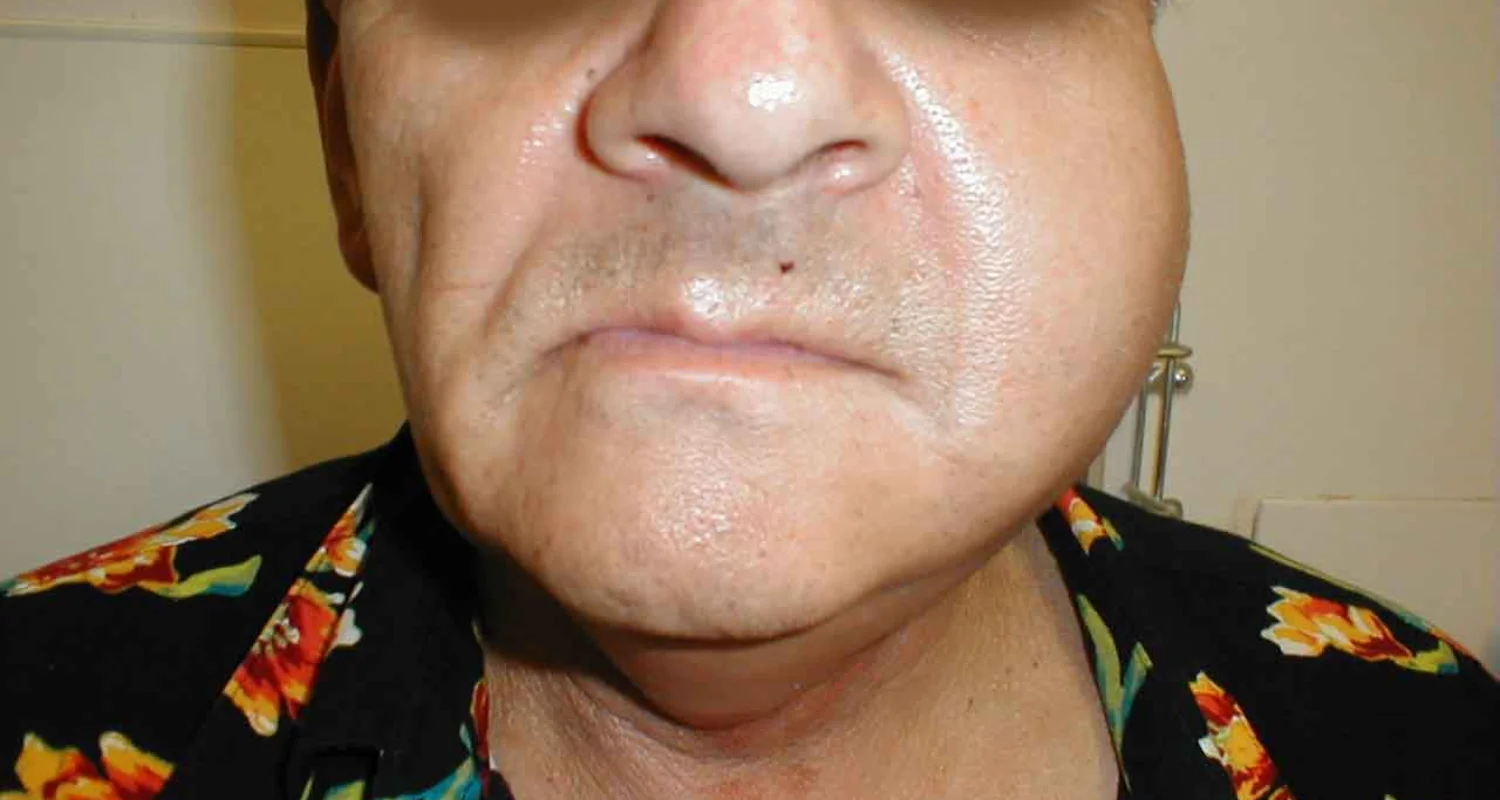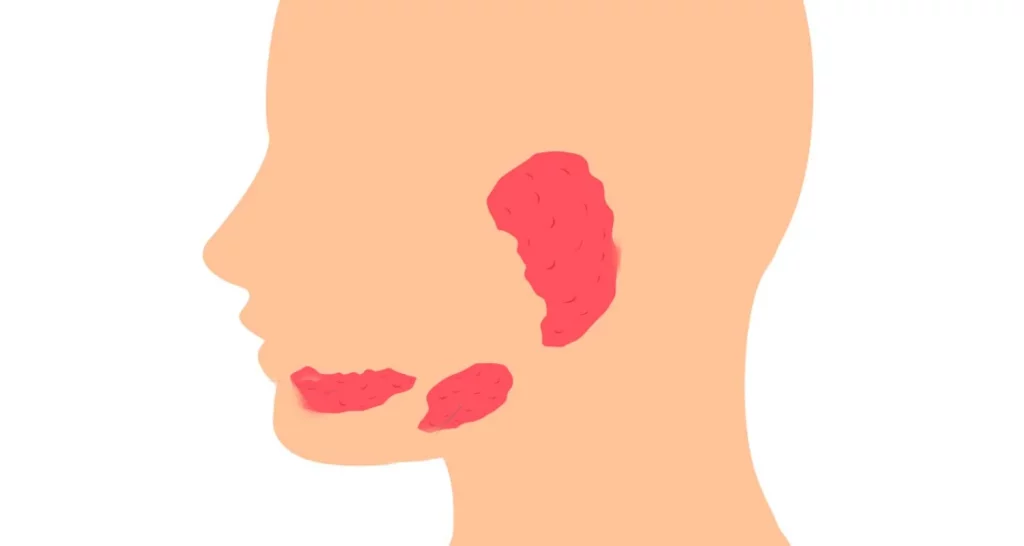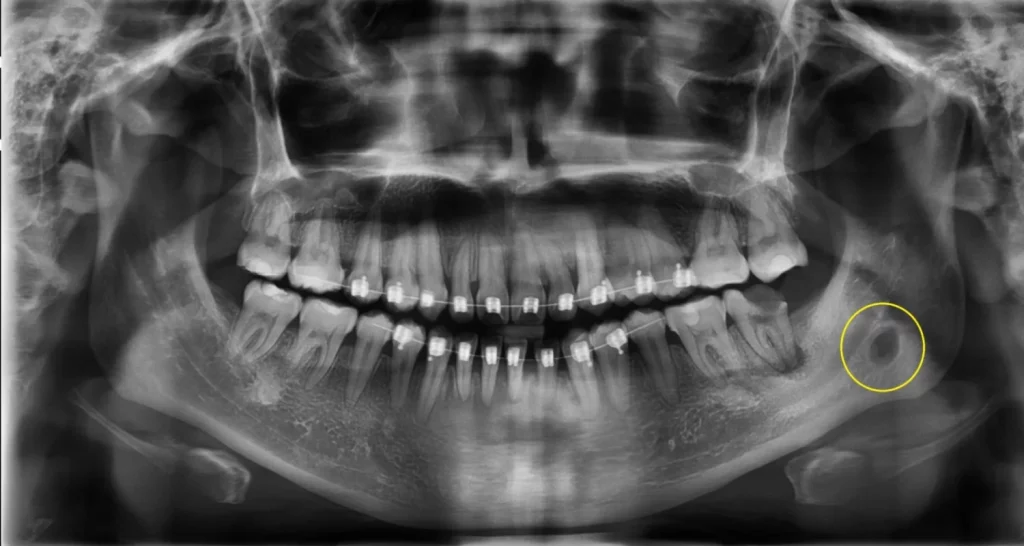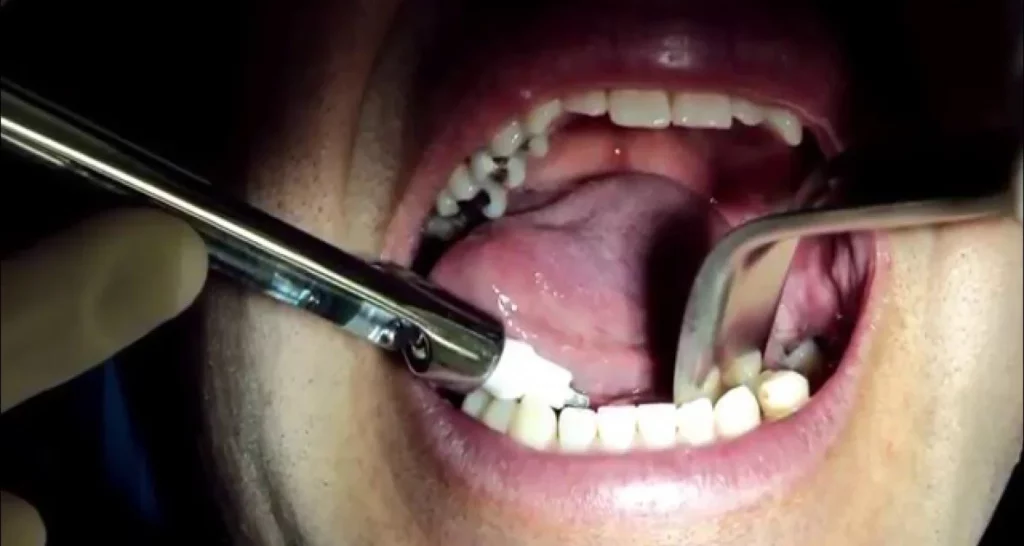Last Updated on: 19th September 2025, 12:42 pm
Swelling of the Parotid Gland: Complete Guide
Did you know that the average adult secretes approximately half a liter of saliva per day? Saliva is produced by two structures found in the cheeks, just in front of the ears, called the parotid glands. The parotid glands can increase in size for various reasons; several of them require professional attention to avoid further complications. In this article, we offer a complete guide on the inflammation or swelling of the parotid glands.
What are the Parotid Glands?
The parotid glands are structures approximately 6 cm long and 4 cm wide that are responsible for the production of saliva. They are located on both sides of the face, connected to the inside of the mouth by a canal that opens at the level of the upper second molars. There are other salivary glands, but the parotid glands are the largest and produce the greatest amount of saliva.
What are the Causes of Swelling of the Parotid Gland?
There are various causes of swelling of the salivary glands. Among the most common are:
1. Mumps (acute sialadenitis)
Epidemic parotitis, commonly called “mumps,” is one of the main causes of inflammation of the parotid glands. Fortunately, since there is a vaccine for paramyxovirus (the virus that causes it), it is becoming less common. It is a very contagious disease transmitted through saliva and the respiratory tract. The majority of patients who contract the virus are children between 5 and 9 years old.
2. Chronic recurrent parotitis (chronic sialadenitis)
When parotitis occurs in adults, it usually occurs in patients with decreased salivary glands (hypoplasia) due to the consumption of medications or diseases such as Sjögren’s Syndrome. The decrease in salivary flow causes bacteria from the mouth to enter the salivary duct and generate a recurrent infection.
3. Sialolithiasis
Although the formation of stones or stones in the salivary ducts is usually more common in the submandibular glands, it can also occur in the parotid gland duct. These are produced by the deposits of calcium salts around an accumulation of saliva proteins.
4. Pneumoparotitis
This damage is caused by the presence of air inside the parotid gland, often generated by applying strong pressure with wind instruments or in small children when they try to inflate balloons and must apply too much pressure.
5. Tumors in the parotid gland
The parotid glands are the most common location for salivary gland tumors. Most of them are benign, that is, not cancerous. However, malignant tumors can also occur, known as cancer of the parotid gland.
How is Swelling of the Parotid Gland Diagnosed?
Depending upon the symptoms and the data obtained from an interview with the patient, the health professional will use different means to find the origin of the swelling of the parotid glands, including:
● Physical exam
● Sialography
● Collection of tissue samples
● Diagnostic imaging
What are the Symptoms of Parotid Gland Swelling?
1. Mumps (acute sialadenitis):
a. Bilateral swelling of the parotid glands; sometimes, the submandibular glands are also affected.
b. Pain
c. Difficulty opening the mouth.
d. Moderate fever.
e. Duration: approximately 7 days.
2. Chronic recurrent parotitis (chronic sialadenitis):
a. Unilateral swelling of the parotids (only on one side of the face).
b. Pain in the region near the ears.
c. Redness at the outlet of the salivary duct.
d. Pus’s occasional discharge
3. Sialolithiasis:
a. Uni or bilateral swelling of the salivary glands.
b. Pain that increases at mealtime.
4. Pneumoparotitis:
a. Pain
b. Swelling of one or both salivary glands.
c. Production of foamy saliva when pressing the gland.
5. Tumors in the parotid gland:
a. Swelling of the face or jaw.
b. They usually do not cause pain.
c. Difficulty to swallow.
d. Loss of facial movements.
What is the Treatment for Swelling of the Parotid Gland?
1. Mumps and sialadenitis:
Mumps gradually disappear within a week without treatment. It is recommended to rest, ensure plenty of hydration, eat soft food, and control the symptoms through the use of pain relievers and fever medications.
2. Chronic recurrent parotitis (chronic sialadenitis):
The doctor may prescribe antibiotics to treat the infection.
3. Sialolithiasis
To eliminate stones inside the ducts, the doctor will stimulate the secretion of saliva with medications called sialogogues. When it comes to large sialoliths, located within the salivary duct or inside the gland, they must be removed surgically.
4. Pneumoparotitis
Medical management of this condition is usually done with pain relievers, anti-inflammatories, and a treatment to increase saliva production.
5. Tumors in the parotid gland
Depending on the benign or malignant nature of the tumor, treatment can vary from surgical resection to the use of treatments such as chemotherapy or radiotherapy.
Complications of Parotid Gland Swelling
In the third part of young people who have mumps and have already passed puberty, a very painful disease called epididymo-orchitis may occur, in which the testicles swell, reaching 4 times their normal size. In very rare cases, these patients could become sterile.
When to See a Doctor?
Whenever swelling occurs in one or both parotid glands, it is advisable to see a doctor to make a correct diagnosis and start the most appropriate treatment promptly, if required.
Prevention of Swelling of the Parotid Gland
1. Vaccination: Vaccinations for children have significantly reduced the incidence of mumps. This should be applied after 15 months of age, and reinforced between 4 and 6 years.
2. Avoid direct contact with sick people: Because mumps is highly contagious, it is recommended to avoid contact with people who are infected.
3. Prevent young children from blowing up balloons: To avoid damage to the parotid glands, do not let young children blow up balloons.
4. Hydration: Maintaining good hydration promotes saliva production and reduces the risk of developing sialoliths.
5. Good oral hygiene: It reduces the bacterial load inside the mouth and helps avoid possible infections.
Conclusion
Swelling of the parotid glands can be due to a variety of causes, from infectious diseases such as mumps to structural problems such as sialolithiasis. Accurate diagnosis and timely treatment are essential to prevent complications. Prevention through vaccination, good oral hygiene, and appropriate care measures are crucial to maintain the health of salivary glands.
Frequently Asked Questions
What causes inflammation of the parotid glands?
The term “mumps” refers to inflammation of the parotid glands, the salivary glands located between the ear and jaw. Various factors can cause this inflammation, including both viral and bacterial infections, stone formation in the salivary glands, and dental complications. Treatment methods vary and include the use of antiviral medications and antibiotics, as well as the application of heat and massage to the affected area.
How is mumps treated?
Generally, the approach to chronic mumps focuses on treating the symptoms. Methods such as the use of sialogogues, the application of localized heat, a delicate massage of the gland from back to front, and maintaining adequate hydration offer symptom relief to varying degrees. In cases where there is an expulsion of pus through the Stensen duct, culture and sensitivity analyses guide the choice of the most appropriate antibiotic treatment.
Do mumps occur suddenly?
There are two types of parotitis: acute and chronic. Acute parotitis is characterized by a sudden onset of pain and swelling in the parotid gland. On the other hand, chronic relapsing parotitis (CRP) manifests itself with periodic pain and swelling of the gland, which can occur with or without relation to food intake.
When should I be concerned about inflammation of the parotid gland?
Although infections in the parotid gland are not common, it is important to be vigilant. If you experience swelling in any of your cheeks, accompanied by chills or fever, it is crucial to seek professional medical attention immediately. A health professional will be able to diagnose the cause of the problem and suggest the appropriate treatment to reduce the inflammation of the parotid gland.
Share:
References
1. Fayed, L. (Oct 18, 2010). The importance of your parotid gland. Verywell Health. https://www.verywellhealth.com/parotid-gland-513663
2. Gadodia, A., Bhalla, A. S., Sharma, R., Thakar, A., & Parshad, R. (2011). Bilateral parotid swelling: a radiological review. Dento Maxillo Facial Radiology, 40(7), 403–414.
3. Huizen, J., & Charmley, S. (Jul 14, 2018). Salivary gland infections: Causes, types, symptoms, and treatment. Medicalnewstoday.com. https://www.medicalnewstoday.com/articles/322439
4. Parotitis. (Jul 20, 2022). Cleveland Clinic.
https://my.clevelandclinic.org/health/diseases/23577-parotitis-parotid-gland-swelling
5. Salivary gland infection (sialadenitis). (Dec 25, 2022). Hopkinsmedicine.org. https://www.hopkinsmedicine.org/health/conditions-and-diseases/salivary-gland-infection-sialadenitis
6. Salivary gland problems. (s/f). WebMD. https://www.webmd.com/oral-health/salivary-gland-problems-infections-swelling
-
Nayibe Cubillos M. [Author]
Pharmaceutical Chemestry |Pharmaceutical Process Management | Pharmaceutical Care | Pharmaceutical Services Audit | Pharmaceutical Services Process Consulting | Content Project Manager | SEO Knowledge | Content Writer | Leadership | Scrum Master
View all posts
A healthcare writer with a solid background in pharmaceutical chemistry and a thorough understanding of Colombian regulatory processes and comprehensive sector management, she has significant experience coordinating and leading multidisciplina...




















